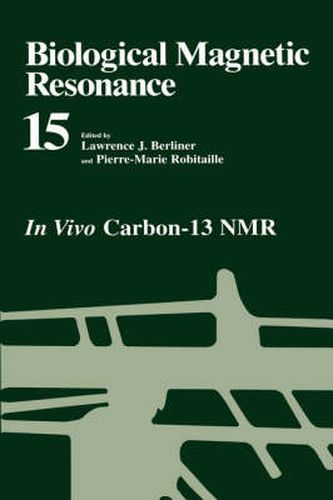Readings Newsletter
Become a Readings Member to make your shopping experience even easier.
Sign in or sign up for free!
You’re not far away from qualifying for FREE standard shipping within Australia
You’ve qualified for FREE standard shipping within Australia
The cart is loading…






This title is printed to order. This book may have been self-published. If so, we cannot guarantee the quality of the content. In the main most books will have gone through the editing process however some may not. We therefore suggest that you be aware of this before ordering this book. If in doubt check either the author or publisher’s details as we are unable to accept any returns unless they are faulty. Please contact us if you have any questions.
In vivo nuclear magnetic and electron spin resonance spectroscopy is concerned, inter alia, with the noninvasive observation of metabolic changes in living systems, including animals and humans. Typically, the physiologi cal (or pathological) state of an organ or tissue is monitored. This multi faceted approach was developed during the 1980s. It is still a research technique, but will undoubtedly become a clinical tool. We are proud to present this volume (the eleventh of our series) in which some of the pioneers in this area summarize their contributions and review related literature. Bolinger and Lenkinski describe a variety of localization methods suitable for clinical applications of NMR spectroscopy. Schleich, Caines, and Rydzewski summarize their contributions to approaches involving off-resonance rotating frame relaxation and critically compare these with other NMR techniques that may yield similar information. Chang and James outline their approach and share their experience with the technical aspects 1 31 of H and P NMR spectroscopy and spatially localized spectroscopy in studies of brain ischemia. Sodium plays an important role in living systems, a key aspect being the large gradient between intra- and extracellular concentrations of sodium that is maintained by a variety of transport mechanisms. Miller and Elgavish give us a comprehensive review of an important research tool in this 23 area- Na NMR spectroscopy as aided by shift reagents.
$9.00 standard shipping within Australia
FREE standard shipping within Australia for orders over $100.00
Express & International shipping calculated at checkout
This title is printed to order. This book may have been self-published. If so, we cannot guarantee the quality of the content. In the main most books will have gone through the editing process however some may not. We therefore suggest that you be aware of this before ordering this book. If in doubt check either the author or publisher’s details as we are unable to accept any returns unless they are faulty. Please contact us if you have any questions.
In vivo nuclear magnetic and electron spin resonance spectroscopy is concerned, inter alia, with the noninvasive observation of metabolic changes in living systems, including animals and humans. Typically, the physiologi cal (or pathological) state of an organ or tissue is monitored. This multi faceted approach was developed during the 1980s. It is still a research technique, but will undoubtedly become a clinical tool. We are proud to present this volume (the eleventh of our series) in which some of the pioneers in this area summarize their contributions and review related literature. Bolinger and Lenkinski describe a variety of localization methods suitable for clinical applications of NMR spectroscopy. Schleich, Caines, and Rydzewski summarize their contributions to approaches involving off-resonance rotating frame relaxation and critically compare these with other NMR techniques that may yield similar information. Chang and James outline their approach and share their experience with the technical aspects 1 31 of H and P NMR spectroscopy and spatially localized spectroscopy in studies of brain ischemia. Sodium plays an important role in living systems, a key aspect being the large gradient between intra- and extracellular concentrations of sodium that is maintained by a variety of transport mechanisms. Miller and Elgavish give us a comprehensive review of an important research tool in this 23 area- Na NMR spectroscopy as aided by shift reagents.